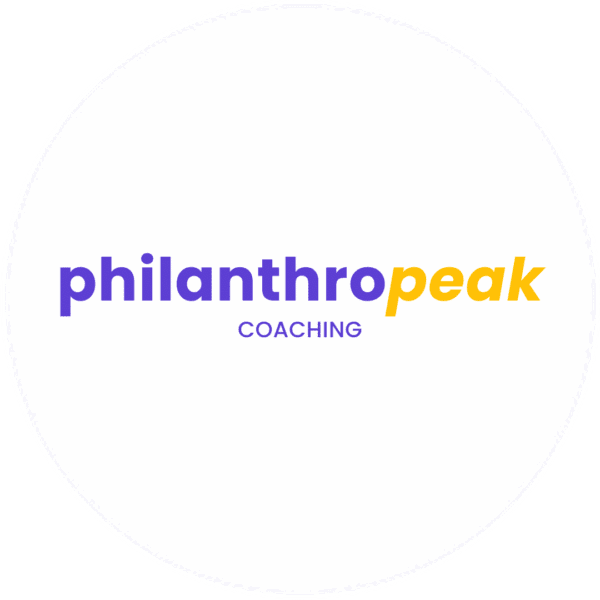You know that feeling when puzzle pieces suddenly click together?
That’s exactly what happened when researchers started connecting hypermobility and ADHD.
I’m talking about the kind of revelation that makes you go “Wait, THAT explains so much about my life.”
If you’ve got bendy joints and your brain feels like it’s running on twelve different tabs at once, you’re not imagining the connection.
The Research That’s Blowing Minds
Here’s what’s wild about hypermobility and ADHD research.
Studies from Brighton and Sussex Medical School show that people with joint hypermobility syndrome are significantly more likely to have ADHD than the general population.
We’re talking about numbers that make researchers do double-takes.
The Ehlers-Danlos Society has been tracking this connection for years, and the data keeps getting stronger.
Dr. Jessica Eccles has been leading groundbreaking research showing that connective tissue disorders and neurodivergent conditions share more than just coincidental timing.
When you look at the statistical prevalence, it’s not just a random overlap.
People with hypermobile joints show executive function challenges at rates that can’t be explained by chance.
The research from King’s College London suggests there might be shared mechanisms between how our connective tissue works and how our brains process information.
Think about it this way – if your body’s structural systems are more flexible than typical, why wouldn’t your neurological systems have some flexibility too?
The International ADHD Federation has started recognising this connection as more than just interesting coincidence.
Recognising the Signs You Might Have Both
Let me paint you a picture of what hypermobility and ADHD actually look like in real life.
Hypermobility isn’t just being able to touch your toes or bend your thumb back.
It’s having joints that move beyond the typical range, often measured by something called the Beighton Score.
Your knees might hyperextend when you stand.
Your elbows might bend backwards more than they should.
You might be able to put your palms flat on the floor without bending your knees.
But here’s where it gets interesting with ADHD symptoms.
That same flexibility that shows up in your joints often shows up in how your brain works.
You might struggle with proprioception – basically knowing where your body is in space without looking.
This connects directly to attention challenges because your brain is constantly trying to figure out what your body is doing.
Executive function issues become more complex when you add hypermobile joints into the mix.
You’re not just dealing with typical ADHD focus challenges.
You’re also managing a body that doesn’t always give you reliable feedback about position and movement.
People with both conditions often describe feeling “disconnected” from their bodies in ways that affect concentration.
The sensory processing differences that come with ADHD get amplified when your joints aren’t giving your brain consistent information.
For ADHD entrepreneurs and business owners, this combination creates unique challenges that most productivity advice completely misses.
Traditional business systems assume your body and brain work in predictable, neurotypical ways.
But when you’re managing hypermobility and ADHD together, you need completely different approaches.
That’s exactly why PhilanthroPeak Coaching’s ADHD Business Compass™ focuses on neuroscience-informed systems that work with your actual brain patterns, not against them.
The Sensory Connection That Changes Everything
This is where hypermobility and ADHD get really interesting.
Your proprioceptive system – the one that tells your brain where your body is – relies heavily on feedback from your joints and connective tissue.
When you have hypermobile joints, that feedback system isn’t as reliable as it should be.
Your brain has to work overtime to figure out what your body is doing.
This extra processing load directly impacts your ability to focus and maintain attention.
It’s like trying to concentrate on work while someone keeps moving your chair.
The sensory processing differences that come with ADHD get more complicated when your joints aren’t giving consistent signals.
You might find yourself fidgeting more because your brain is constantly seeking that proprioceptive input.
Sitting still becomes almost impossible because your hypermobile joints don’t give your brain the stability cues it needs.
This explains why so many people with both conditions struggle with traditional work environments.
Open offices, uncomfortable chairs, and expectations to sit still for hours become torture when you’re managing hypermobility and ADHD together.
Your brain is simultaneously trying to:
- Process whatever task you’re working on
- Figure out where your body is in space
- Manage the discomfort from unstable joints
- Deal with sensory input from your environment
No wonder productivity feels impossible some days.
The connection between joint instability and attention challenges explains why rigid business systems fail for so many ADHD entrepreneurs.
When your body needs constant micro-adjustments throughout the day, your business systems need to be just as flexible.
Static schedules and fixed routines don’t work when you’re managing the unpredictable nature of both hypermobility and ADHD symptoms.
This is why building ADHD-friendly business systems requires understanding how your whole body impacts your ability to focus and execute.
Why This Connection Matters for Your Daily Life
Understanding the link between hypermobility and ADHD changes how you approach everything.
Suddenly, your need for movement during work makes complete sense.
Your struggles with sitting through long meetings aren’t about willpower – they’re about neurology and connective tissue.
The fatigue you feel after trying to focus isn’t just mental exhaustion.
It’s your brain getting tired from processing inconsistent signals from hypermobile joints alongside typical ADHD executive function demands.
This combination often shows up as:
- Needing to change positions constantly while working
- Difficulty with tasks that require sustained attention in static positions
- Increased fidgeting and movement-seeking behaviours
- Fatigue that seems disproportionate to the mental effort required
- Challenges with body awareness during focus-intensive tasks
For business owners and entrepreneurs, recognising this connection is game-changing.
Instead of fighting against your need for movement and sensory input, you can build business practices that work with these requirements.
The ADHD Business Compass™ specifically addresses how to create sustainable productivity systems when you’re managing both neurological and physical flexibility.
Many successful ADHD entrepreneurs discover that their hypermobility and ADHD combination actually becomes a superpower once they stop trying to fit into neurotypical business moulds.
The flexibility that shows up in your joints often translates to cognitive flexibility that gives you advantages in creative problem-solving and adaptive thinking.
Your brain’s constant processing of multiple sensory inputs can translate to excellent pattern recognition and innovative approaches to business challenges.
The key is building systems that support both your neurological needs and your physical requirements for movement and position changes.
This means creating work environments that accommodate frequent position changes, building in movement breaks that aren’t just “nice to have” but essential for optimal function, and designing business processes that leverage your natural flexibility rather than requiring rigid adherence to static routines.
Getting the Right Assessment and Support
If you’re reading this and thinking “This sounds exactly like me,” you’re not alone.
Many people discover the connection between hypermobility and ADHD later in life, often after years of struggling with symptoms that seemed unrelated.
The assessment process typically involves seeing different types of healthcare professionals who specialise in each condition.
For hypermobility assessment, you might work with rheumatologists, physiotherapists, or specialists familiar with Ehlers-Danlos syndrome and hypermobility spectrum disorders.
The Beighton Score is commonly used to assess joint hypermobility, but comprehensive evaluation looks at much more than just how bendy your joints are.
ADHD assessment involves psychiatrists, psychologists, or other mental health professionals trained in neurodevelopmental conditions.
The challenge is finding professionals who understand how these conditions interact and compound each other’s effects.
This is particularly important for entrepreneurs and business owners who need practical strategies that address both conditions simultaneously.
Traditional ADHD coaching often misses the physical component of hypermobility, while physical therapy for hypermobility rarely addresses the executive function challenges that come with ADHD.
The most effective approach integrates understanding of both conditions and how they impact your ability to build and run a successful business.
Personal Stories and Living Successfully with Both Conditions
Here’s what most people don’t tell you about discovering hypermobility and ADHD together.
The “aha moment” usually doesn’t happen in a doctor’s office.
It happens when you’re scrolling through social media and see someone describing your exact experience.
Or when a friend mentions their bendy joints and ADHD diagnosis in the same conversation.
Suddenly, all those random symptoms that never seemed connected start making perfect sense.
People often describe it as finally having a roadmap for why their bodies and brains work the way they do.
The relief of understanding that your struggles with focus weren’t just about “trying harder” or “being more disciplined.”
Your brain was literally working overtime to process signals from hypermobile joints while managing typical ADHD executive function challenges.
Many discover both conditions after years of being told they’re “too sensitive” or “just need to focus better.”
The hypermobility gets dismissed as being “double-jointed” or “naturally flexible.”
The ADHD symptoms get explained away as personality quirks or lack of motivation.
But when you understand how connective tissue disorders and neurodivergent conditions interact, everything clicks.
This revelation is particularly powerful for entrepreneurs and business owners who’ve been forcing themselves into productivity systems that never quite worked.
You weren’t failing at business systems – the systems were failing you.
Traditional productivity advice assumes your body provides consistent sensory feedback and your brain processes information in neurotypical ways.
When you have hypermobility and ADHD, you need completely different approaches to building sustainable businesses.
The entrepreneurs who thrive with both conditions stop trying to fit into rigid frameworks and start building systems that work with their natural flexibility.
Building a Life That Works with Your Wiring
Living successfully with hypermobility and ADHD isn’t about managing two separate conditions.
It’s about understanding how they interact and creating lifestyle choices that support both.
Your workspace setup becomes crucial when you’re managing joint instability alongside attention challenges.
Standing desks, stability balls, and frequent position changes aren’t luxuries – they’re necessities for optimal function.
The old advice about “just sitting still and focusing” becomes obviously inadequate when you understand the neuroscience.
Your brain needs movement and proprioceptive input to maintain attention, especially when hypermobile joints aren’t providing reliable feedback.
For ADHD entrepreneurs, this means completely reimagining how business gets done.
Client calls might happen while walking or using a standing desk.
Deep work sessions need to include movement breaks that aren’t just nice-to-have but essential for maintaining focus.
Project timelines must account for the reality that some days your brain and body need more support than others.
The ADHD Business Compass™ specifically addresses these realities, helping you build business systems that leverage your natural flexibility rather than fighting against it.
Daily routines for people with hypermobility and ADHD look different from neurotypical recommendations.
Morning routines might include gentle movement to help your brain connect with your body before attempting focused work.
Work sessions are shorter but more intense, working with your natural attention patterns rather than against them.
Evening wind-down includes activities that help both your overactive mind and your potentially achy joints settle for sleep.
The key is recognising that your needs aren’t excessive or high-maintenance – they’re neurologically necessary.
Workplace and Business Accommodations That Actually Work
Traditional workplace accommodations for ADHD rarely consider the physical component of hypermobility.
You might get extra time for tasks or permission to use noise-cancelling headphones.
But what about the need to change positions throughout the day or take movement breaks for proprioceptive input?
The most effective accommodations address both the neurological and physical aspects of hypermobility and ADHD.
This includes ergonomic workspace setups that accommodate frequent position changes.
Meeting formats that allow for movement and fidgeting without being disruptive.
Task scheduling that works with both your attention patterns and your body’s need for movement and rest.
Business owners with hypermobility and ADHD have a unique advantage – you can design your entire work environment around your actual needs.
No more asking permission to stand during meetings or explaining why you need to pace while thinking.
You can build businesses that operate on flexible schedules, accommodate varying energy levels, and leverage your natural cognitive flexibility.
The challenge is unlearning all the conditioning that tells you business “should” look a certain way.
Successful ADHD entrepreneurs with hypermobility often discover that their conditions become competitive advantages once they stop trying to suppress them.
Your ability to think flexibly translates to innovative problem-solving in business challenges.
Your need for movement and change keeps you from getting stuck in rigid thinking patterns.
Your heightened sensory awareness helps you pick up on client needs and market changes that others miss.
Building support networks becomes essential when you’re managing hypermobility and ADHD in business contexts.
This includes finding healthcare providers who understand both conditions and how they interact.
Connecting with other entrepreneurs who share similar neurological and physical experiences.
Creating systems that provide backup support for days when symptoms are more challenging.
The ADHD Business Compass™ includes specific modules on building these support systems and creating business structures that remain stable even when your symptoms fluctuate.
Resources and Community Connections
The hypermobility and ADHD community is growing rapidly as more people discover this connection.
Online communities provide valuable peer support and practical tips for managing both conditions.
The Ehlers-Danlos Society offers resources specifically addressing the overlap between connective tissue disorders and neurodivergent conditions.
Research from institutions like Stanford University continues to expand our understanding of how these conditions interact.
Professional resources are evolving too, with more healthcare providers recognising the need for integrated approaches.
Physical therapists are learning about ADHD executive function challenges.
ADHD specialists are beginning to understand how hypermobility affects attention and focus.
The most effective support comes from professionals who understand both conditions and their interactions.
For business applications, this means seeking out coaches and mentors who understand how neurological and physical flexibility impact entrepreneurial success.
Generic business advice rarely accounts for the realities of managing hypermobility and ADHD while building a company.
You need strategies that work with your natural patterns rather than forcing you into neurotypical business moulds.
This includes understanding how to leverage your cognitive flexibility as a business advantage.
Recognising when your need for movement and sensory input actually enhances your creative problem-solving abilities.
Building business systems that remain functional even when your symptoms require more attention on certain days.
Frequently Asked Questions
Can you have hypermobility and ADHD without realising they’re connected?
Absolutely. Many people live with both conditions for years without understanding the connection. Hypermobility often gets dismissed as being “naturally flexible,” while ADHD symptoms might be attributed to personality traits or lack of focus. The link between joint hypermobility syndrome and executive function challenges is still being researched, so many healthcare providers don’t automatically screen for both conditions.
Does having hypermobility make ADHD symptoms worse?
Research suggests that hypermobile joints can impact attention and focus through disrupted proprioceptive feedback. When your brain has to work harder to process signals from unstable joints, it has fewer resources available for executive functions like attention and working memory. This doesn’t necessarily make ADHD “worse,” but it adds an additional layer of sensory processing that can affect concentration.
Are there specific types of hypermobility that connect with ADHD?
Studies show connections between ADHD and various forms of hypermobility, including joint hypermobility syndrome, hypermobility spectrum disorders, and some types of Ehlers-Danlos syndrome. The research from Brighton and Sussex Medical School suggests the connection isn’t limited to one specific type of connective tissue disorder.
How do I find healthcare providers who understand both hypermobility and ADHD?
Look for professionals who specialise in neurodevelopmental conditions or connective tissue disorders and ask specifically about their experience with comorbid conditions. Some rheumatologists, developmental paediatricians, and psychiatrists have training in both areas. The Ehlers-Danlos Society and ADHD Foundation may provide referral resources.
Can hypermobility and ADHD combination be an advantage in business?
Many entrepreneurs find that their cognitive flexibility and ability to think outside conventional frameworks becomes a significant business advantage. The same neural patterns that create challenges with traditional productivity systems often translate to innovative problem-solving and adaptive thinking. The key is building business systems that work with these strengths rather than trying to suppress them.
Do children with hypermobility and ADHD need different educational support?
Children with both conditions often benefit from accommodations that address both neurological and physical needs. This might include movement breaks, alternative seating options, and recognition that fidgeting and position changes support rather than distract from learning. Educational teams should understand how proprioceptive needs interact with attention challenges.
Is there genetic testing for hypermobility and ADHD?
While there are genetic tests for some types of Ehlers-Danlos syndrome, most hypermobility conditions are diagnosed clinically using tools like the Beighton Score. ADHD diagnosis is also clinical rather than genetic. Research is ongoing into the genetic factors that might predispose someone to both conditions.
How does exercise impact hypermobility and ADHD symptoms?
Exercise can be particularly beneficial for people with both conditions, but needs to be approached carefully. Low-impact activities that provide proprioceptive input without overstressing hypermobile joints often work best. Swimming, yoga, and strength training with proper form can help both ADHD symptoms and joint stability.
Living Your Best Life with Hypermobility and ADHD
Understanding the connection between hypermobility and ADHD isn’t just about getting the right diagnosis.
It’s about finally having a framework that makes sense of your experiences.
The fidgeting that teachers complained about wasn’t defiance – it was your brain seeking the sensory input it needed to focus.
The difficulty sitting through long meetings wasn’t lack of professionalism – it was your hypermobile joints failing to provide stable proprioceptive feedback.
The challenge with traditional productivity systems wasn’t lack of motivation – it was trying to force neurological and physical flexibility into rigid frameworks.
For entrepreneurs and business owners, this understanding opens up entirely new possibilities.
Instead of fighting against your natural patterns, you can build businesses that leverage your cognitive flexibility and adaptive thinking.
Your need for movement and change becomes an asset in rapidly evolving markets.
Your heightened sensory awareness translates to better intuition about client needs and business opportunities.
The key is building systems that work with your hypermobility and ADHD rather than despite them.
This means creating workspaces that accommodate frequent position changes.
Designing schedules that honour both your attention patterns and your body’s needs.
Building businesses that remain stable even when your symptoms require extra attention.
The ADHD Business Compass™ provides the roadmap for building these kinds of sustainable, neuroscience-informed business systems.
The future for people with hypermobility and ADHD is bright.
Research continues to expand our understanding of how these conditions interact and influence each other.
More healthcare providers are recognising the need for integrated approaches that address both neurological and physical aspects.
Business culture is slowly shifting to recognise that diverse neurological wiring often drives innovation and creative problem-solving.
Your hypermobility and ADHD combination isn’t something to manage or overcome.
It’s a unique neurological and physical profile that, when properly understood and supported, can become your greatest strength.
The entrepreneurs, creatives, and business owners who thrive with both conditions are those who stop trying to fit into neurotypical moulds and start building lives and businesses that celebrate their natural flexibility.
This is your invitation to stop fighting against your wiring and start building with it.
Your brain and body are giving you valuable information about how you work best.
The question isn’t how to overcome your hypermobility and ADHD – it’s how to create a life and business that lets both conditions become superpowers.





